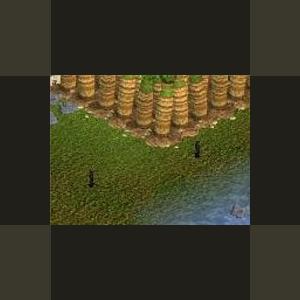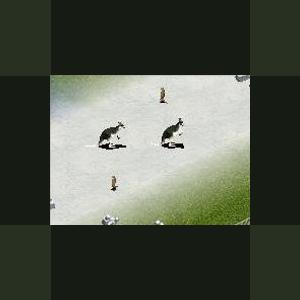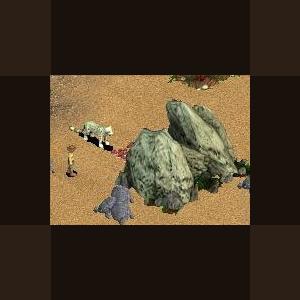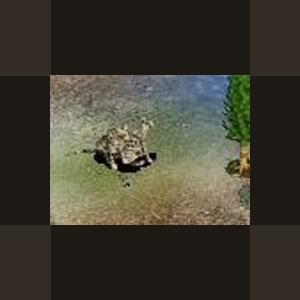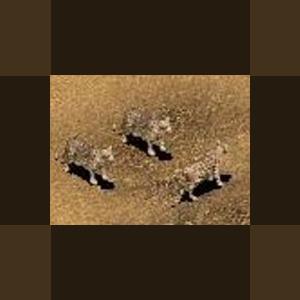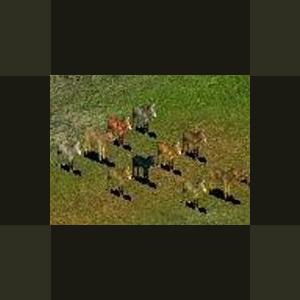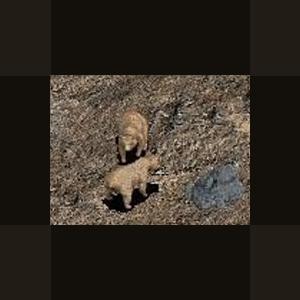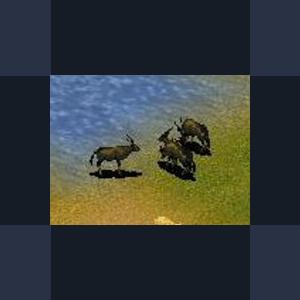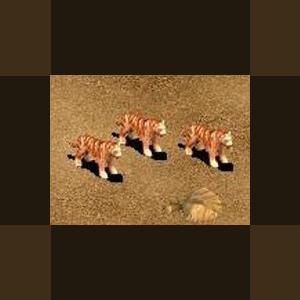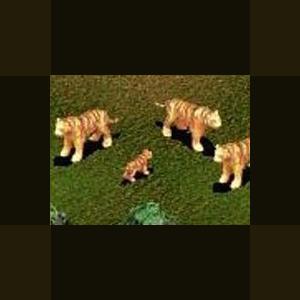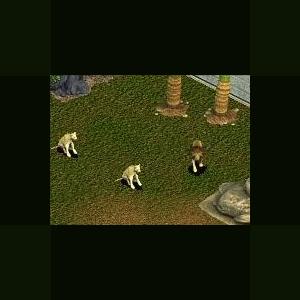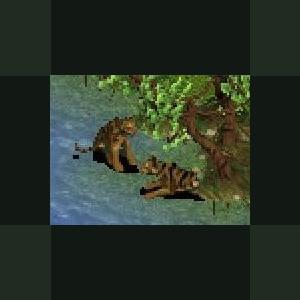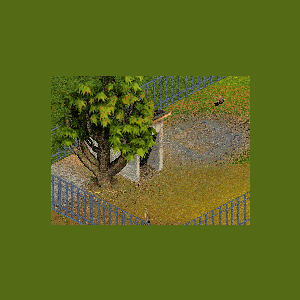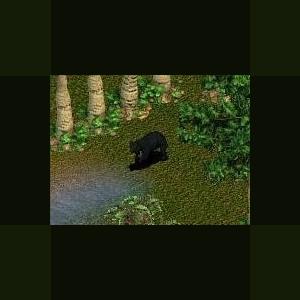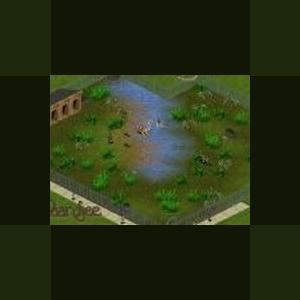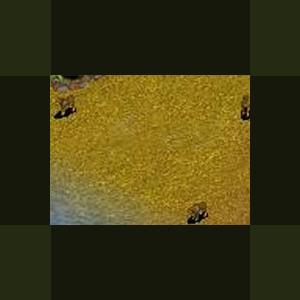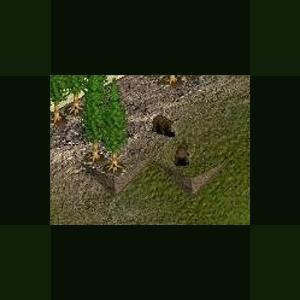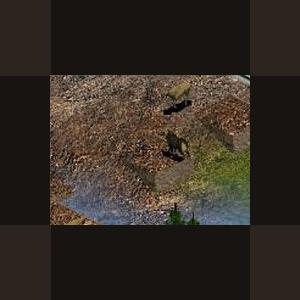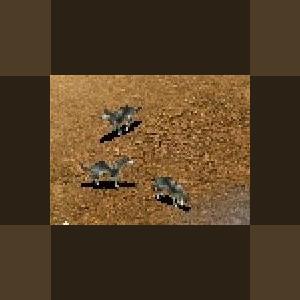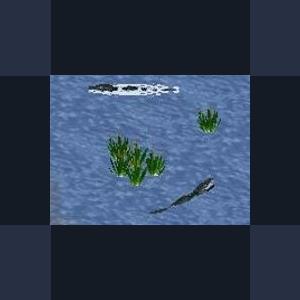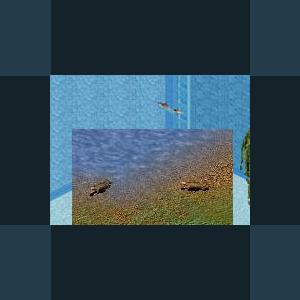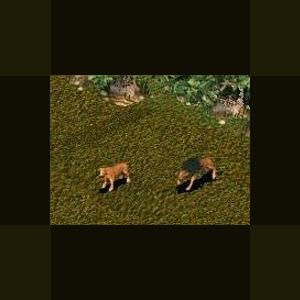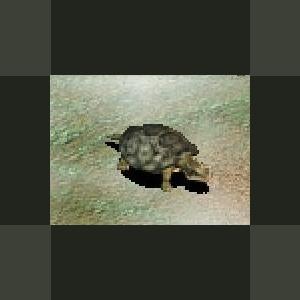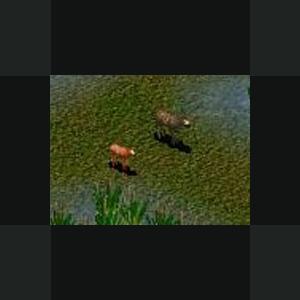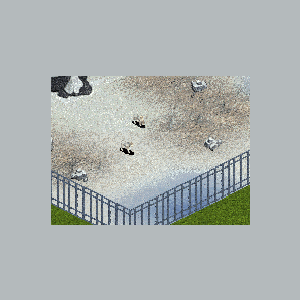279 files
-
Black Giant Squirrel by Jordan
By Guest
The Black Giant Squirrel is a member of the Sciuridae family that lives alone or in pairs in Southeast Asia.
Updated 2010-10-30
Just to save space with less in zip and smaller image.
363 downloads
0 comments
Updated
-
Arctic Meerkat by Jordan
By Guest
Arctic Meerkat by Jordan
Arctic meerkats are rare creatures that live happily with arctic kangaroos.
The arctic meerkat is a rare creature from the frozen wastes of Antarctica. Only recently discovered by a Tek Phoenix naturalist, they bear many similarities to a previously known species, the arctic kangaroo, with whom the meerkats peacefully share a habitat.
Compatible with Devona's Arctic Kangaroo
Made for Pukkie
Updated 2010-10-30
Just to save space with less in zip and smaller image.
Nothing new.
288 downloads
0 comments
Updated
-
Arabian Leopard by Jaguarkid
By Guest
Arabian Leopard by Jaguarkid
Arabian Leopards (Panthera pardus nimr) are critically endangered felines located in Asia and are the most largest and widely distributed cat in Arabia. Arabian leopards are subspecies of leopards most closely related to African Leopards. Arabian Leopards were classified as critically endangered in 1996.
Until the later sixties, Arabian Leopards were common and widely distibuted from the Yemen Highlands through Egypt's Sinai Peninsula. There are smaller populations found in deserts.
Arabian Leopards have no natural predators besides Humans. Their diet consists of mountain gazelles, lizards, insects, smaller rodents such as hares, birds, and have been known to scavage larger prey. Arabian Leopards generaly weigh 65 punds for males and 45 pounds for females.
The coat of an Arabian Leopard varies from pale white-yellow to a deep golden tone. Arabian leopards have very larger territories (Males generally have larger territories than females). Arabian leopards are very solitary and only come together to mate wich usually lasts 5 days.
Young leopards do not leave their den until they are at lease 4 weeks olf and remain with thier mother for two years while they learn to survive on their own.
This subspecies is critically endangered and there are an estimated less than 200 of them left in the Arabian Peninsula. These leopard's greatest threats are habitat destruction. They are also threatened by hunters and farmers creating a lack of population and prey. Poisoning and killing have caused their population to decline and will likely go extinct if no conservation strategy is used.
Source: Wikipedia Created by Jaguarkid140
Updated 2010-10-30
Just to save space with less in zip and smaller image.
Nothing new.
626 downloads
0 comments
Updated
-
Amur Leopard by Moondawg
By Guest
Amur Leopard by Moondawg
The Amur Leopard (Panthera pardus orientalis or Panthera pardus amurensis) is the rarest subspecies of leopard, and the rarest cat on Earth. . A species of leopard that lives in the northernmost climate, they are facing extinction, as there are less than forty Amur leopards left living in the wild.
Of the eight subspecies the Amur, or Far Eastern leopard (Panthera pardus orientalis) shows the strongest divergence in coat pattern. The coat is pale cream (especially in winter) and has widely spaced rosettes with thick, black rings and darkened centres. The length of the coat varies between 2.5cm in summer and 7.5cm in winter.
The Amur leopard (Panthera pardus orientalis) is the northernmost of the eight leopard subspecies. The Amur leopard's range is overlapping with that of the Amur tiger or Siberian Tiger which range extends further to the north. The Amur leopard's historic range extended throughout northeastern ("Manchurian") China, the southern part of Primorsky Krai in Russia and the Korean Peninsula. This range shrank dramatically during the 20th century, due primarily to habitat loss and hunting. Today, it is critically endangered with only 27 to 34 individuals remaining in Southwest Primorye. There are probably up to 10 animals scattered throughout the Chinese Jilin and Heilongjiang Provinces, with the majority of animals concentrated near the Russian border.
The Amur leopard probably went extinct in the wild in South Korea in the late 1960s, although some recent, unconfirmed reports suggest that a few leopards may remain in and around the demilitarized zone between North and South Korea. There are likely still leopards in the rugged northern region of North Korea near the Chinese border, and it is also likely that animals from Southwest Primorye in Russia occasionally cross the border into North Korea, but reliable information is lacking.
The Amur leopard is listed as Endangered by the IUCN and is on CITES Appendix I for protection status.
There are approximately 300 Amur leopards in captivity, mostly in zoos in Europe, North America and countries of the former Soviet Union. Most, but not all, of these leopards are in zoos participating in managed conservation breeding programmes.
· Poaching of leopards and their prey species
Poachers include both poor local villagers and newly rich Russians, mainly from the city of Vladivostok, as well as Chinese nationals who illegally cross the border into Russia. Russian hunters kill many more deer than is officially allowed and Amur leopards are sometimes shot or killed with snares as well. Since 2002 skins or corpses of nine Amur leopards killed by poachers were found in Russia and at least two leopards were killed in China.
· Loss of forest habitat due to frequent fires
The forests on which Amur leopards depend slowly disappear as a result of frequent fires. Local villagers start fires for various reasons, but mainly to stimulate the growth of ferns that are a very popular ingredient in Russian and Chinese dishes.
· Negative impacts of inbreeding
Loss of genetic diversity in the small and isolated Amur leopard population may cause inbreeding depression (reduced numbers due to reduced reproduction and lifespan and increased vulnerability to diseases). However, the results of research so far are inconclusive and additional information on the effects of inbreeding is needed before conclusions can be drawn.
· Development projects
Southwest Primorye is located close to the Russian borders with China and North Korea, making it an attractive area for infrastructure projects such as new railways, gas and oil pipelines and ports. In 2005 and 2006 the Zoological Society of London and other ALTA partners led a successful international campaign against a plan to build an oil pipeline terminal on the coast of the Sea of Japan in the leopard’s range.
· Lack of political commitment to conservation
In recent years nature in Russia has suffered from a lack of political interest in conservation. Negative developments since 2000 include the abolishment of the State Committee for Nature Conservation, revoking the law enforcement rights of Inspection Tiger (an anti-poaching brigade for protection of tigers and leopards), and a reduction of the number of field inspector for protection of forests and animals by approximately 80%.
Male Amur leopards weigh 32-48 kg, with exceptionally large males up to 60-75 kg. Females are smaller than the males at 25-43 kg.
The main prey species of the Amur leopard are roe and sika deer, along with hares and badgers.
Whilst it has been found in other regions that leopards do not do well in areas where they share territory with tigers, this has not proved to be the case in Russia. Studies have indicated that an increased tiger population in the Southwest Primorye area has not adversely affected the leopard population.
Amur leopards in zoos show some evidence of breeding seasonalilty with a peak in births in late spring/early summer. After a gestation period of around 12 weeks cubs are born in litters of 1-4 individuals, with an average litter size of just over 2. The cubs will stay with their mother for up to two years before becoming fully independent. Females first breed at an age of 3-4 years.
In the wild, leopards live for 10-15 years and they may reach 20 years in captivity.
Updated 2010-10-30
Just to save space with less in zip and smaller image.
Nothing new.
537 downloads
0 comments
Updated
-
Persian Leopard by Moondawg
By Guest
Persian Leopard
The Persian leopard (Panthera pardus saxicolor), or Iranian leopard, is one of the leopard subspecies native to western Asia. It is endangered throughout its range in the Middle East.
The Persian leopard is said to be the largest of all the subspecies of leopards in the world. It can grow to up to 1.5 to 2.7 feet tall at the shoulder, and weigh as much as 155 lbs. Before 1990, when Armenia, Azerbaijan, Georgia, Russia, and Turkmenistan were the Soviet republics, the scientific names of the leopard used in these countries were P.p. tulliana and P.p. ciscaucasica, whereas the name P.p. saxicolor had been traditionally used by the western specialists for the cats in Iran and, partially, Afghanistan. There are currently a few hundred left in the world.
It is found in Iran, Azerbaijan, Armenia, Turkmenistan, Uzbekistan, Tajikistan, and northwestern Afghanistan. Habitat varies from mountain steppe to grasslands, or anywhere having a reasonable amount of cover and a supply of prey. Unconfirmed reports of big cats in the far southeast of Turkey might also pertain to these animals; see the Caspian Tiger article for details.
Updated 2010-11-05
Just to save space with less in zip and smaller image.
Nothing new.
487 downloads
0 comments
Updated
-
Evolution of the Horses Pack by Moondawg
By Guest
Evolution of the Horse Pack by Moondawg - Combined
The horse belongs to an order known as the Perissodactyls, or "odd-toed ungulates", which all share hoofed feet and an odd number of toes on each foot.
Horses appeared to be absent from the Americas until the Spanish Conquistadors brought domestic horses from Europe in the 16th Century, and escaped horses quickly established large wild herds. The early naturalist Buffon suggested in the 1760s that this was an indication of inferiority of fauna in the New World, then later reconsidered this idea.
William Clark's 1807 expedition to Big Bone Lick found "leg and foot bones of the Horses" which were included with other fossils sent to Thomas Jefferson and evaluated by the anatomist Caspar Wistar, but neither commented on the significance of this find.
During the Beagle survey expedition the young naturalist Charles Darwin had remarkable success with fossil hunting in Patagonia. On 10 October 1833 at Santa Fe, Argentina, he was "filled with astonishment" when he found a horse's tooth in the same stratum as fossil
giant armadillos, and wondered if it might have been washed down from a later layer, but concluded that this was "not very probable". After the expedition returned in 1836 the anatomist Richard Owen confirmed that the tooth was from an extinct species which he subsequently named Equus curvidens, and remarked that "This evidence of the former existence of a genus, which, as regards South America, had become extinct, and has a second time been introduced into that Continent, is not one of the least interesting fruits of Mr. Darwin's palæontological discoveries."
In 1848 a study on the fossil horses of America by Joseph Leidy systematically examined Pleistocene horse fossils from various collections including that of the Academy of Natural Sciences and concluded that there hadbeen at least two ancient horse species in North America, Equus curvidens and another which he named Equus americanus, but a decade later he found that name had already been taken and renamed it Equus complicatus. In the same year he visited Europe and was introduced by Owen to Darwin.
Also included in this pack is the Hipparion and the Merychippus both files have been updated to work with ZT so you won't need DD or CC to use them.
This pack is a combined pack so if you already have Hipparion and Merychippus then the single files will nee to be removed from the update or dlupdate folder.
Updated 2010-11-03
Just to save space with less in zip and smaller image.
Nothing new.
464 downloads
0 comments
Updated
-
Arctodus Simus by Moondawg
By Guest
Arctodus Simus by Moondawg 2008
Arctodus, is also known as the Short-Faced Bear. One species, the Giant Short-Faced Bear (Arctodus simus), is the largest bear that ever lived based on fossil finds. It lived in prehistoric North America from about 800,000 to 12,500 years ago.
Short faced bear (Genus: Arctodus) is an extinct animal of prehistoric bears of the subfamily Tremarctinae. Arctodus simus, along with many other large mammals, became extinct during the Pleistocene epoch. It was preceded in time by A. pristinus, an evolutionary cousin or even ancestor of A. simus, proportionally shorter of leg and longer of muzzle
The short-faced bears belonged to a group of bears known as the tremarctine bears or running bears, which are endemic to the New World. The earliest member of the Tremarctinae was Plionarctos, which lived in Texas during the Pliocene Epoch, (2-5 mya). This genus is considered ancestral to Arctodus, as well as to the modern spectacled bear, Tremarctos ornatus. Although the early history of Arctodus simus is poorly known, it evidently became widespread in North America by the Kansan age (about 800 kya).
Arctodus simus stood as high as two meters (seven feet) at the shoulder on all four legs. When standing bipedally, the animal was over 3.3 m (10 feet) in total height, with a possible reach of almost 4.2 m (14 feet). It is estimated to have weighed 600-860 kg (1300-1900 pounds), around the same weight of its contemporary (or slightly larger) the grizzly bear. The largest specimens were found in Alaska and the Yukon Territory. Males were 20% bigger than females.[3] It was the largest land predator during the Ice Age in North America. The skull was unusual due to its lack of a well-defined forehead and the presence of a short broad muzzle, resembling that of Panthera rather than that of any modern bears. The muscles which passed between the broad cheek bones to power the lower jaws were extremely well-developed and are thought to be adapted for bone crushing in order to obtain the rich marrow. An Arctodus lower jaw can be distinguished from those of the genus Ursus by the slanting ridge dividing muscle attachment areas. Rather than having a waddling gait like modern bear species, Arctodus had toes extending straight forward, presumably being able to move with greater ease. In addition, unlike Ursus, Arctodus had a passage on the lower inside portion of the humerus for a slip of muscle (entepicondylar foramen).
Arctodus had a very short, broad muzzle, the skull having an olfactory area twice as large as that of a grizzly, and this, along with its great height, likely allowed the bear to identify a carcass from much greater distances. The jaw bone was massively foreshortened as in a feline, allowing Arctodus to eat even bone and marrow.
There are currently two recognized subspecies; the large specimens of Alaska, Yukon, Nebraska, California (Irvington) and perhaps Utah are called A. s. yukonensis, while the smaller specimens of Rancho La Brea are A. s. simus.
It was distinguished from its cousin (and possible ancestor) Arctodus pristinus by its bigger, broader, more crowded teeth, its shorter face, and its relatively longer legs.
Analysis of A. simus bones show it occasionally suffered from diseases such as osteomyelitis, as well as tuberculosis-like and possibly syphilis-like infections.
Analysis on Arctodus bones showed high concentrations of nitrogen-15, a stable nitrogen isotope accumulated by meat-eaters with no evidence of ingestion of vegetation. A. simus was an obligate carnivore, and as an adult would have daily required 16 kg (35 pounds) of flesh to survive.
One theory of its predatory habits envisions Arctodus simus as a brutish predator that overwhelmed the large mammals of the Pleistocene with its great physical strength. This idea is considered problematic, as Arctodus, though very large, was quite gracile in build. In order to bring down fellow megafauna, this bear would have had to have been a more robust creature, with a denser skeletal structure. Other experts think the long-legged Arctodus was able to run down smaller Pleistocene herbivores such as steppe horses and saiga antelopes in a cheetah-like fashion. However, in this scenario, the bear’s sheer physical mass would be a handicap. Arctodus skeletons do not articulate in a way that would have allowed for quick turns, an ability required of any predator that survives by killing agile prey. Dr. Paul Matheus, paleontologist at the University of Alaska Fairbanks, determined that Arctodus' moved in a pacing motion like a camel or horse, making it built more for endurance than for great speed. Arctodus simus, then, was ill-equipped to be an active predator, leading some to conclude that it was a kleptoparasite, using its enormous size to intimidate smaller predators such as dire wolves, Smilodon and American lions from their kills.
Though seen by some as primarily a scavenger, its fearsome natural weapons could have allowed it to attack slow-moving animals such as the Megatherium, according to U.S. National Park Service paleontologist Greg McDonald. Despite being largely herbivorous, Megatherium might also have scavenged on carcasses, possibly as a competitor to Arctodus
The giant short-faced bear became extinct some 12 kya, perhaps partly because some of its large prey died out earlier, and partly also because of competition with the smaller, more omnivorous brown bears that entered North America from Eurasia. Since its demise coincides with the development of the Clovis technology and improved hunting techniques by humans in North America, hunting pressure may also have contributed to its extinction, both directly (human hunting) or indirectly (due to the depletion of other large mammals on which it may have followed for its kills or depended on as prey).
Updated 2010-10-30
Just to save space with less in zip and smaller image.
Nothing new.
540 downloads
0 comments
Updated
-
Blesbok by Moondawg
By Guest
The Blesbok, or Blesbuck, (Damaliscus albifrons) is a subspecies of the Bontebok and it is purplish antelope with a distinctive white face and forehead.
They are close relatives of the Bontebok and are only found in South Africa (mostly in protected herds). They were first discovered in the 17th century, but it is not known whether this is because they are a relatively new species or because they have been so elusive.
The Blesbok, or Blesbuck, (Damaliscus dorcas phillpsi) is related to the Bontebok (Damaliscus dorcas dorcas) and it is purplish antelope with a distinctive white face and forehead. Its white face is the origin of its name, because ‘bles’ is the Afrikaans word for blaze. Although they are close relatives of the Bontebok and they can interbreed creating an animal known as the Bontebles they do not share habitat, the Bontebok being found in large numbers on from as far south as Eastern Cape, the plains of the Free State and the Transvaal Highveld. They are a plains species and dislike wooded areas. The blesbuck is indigenous to South Africa and are found in large numbers in all national parks with open grasslands. They were first discovered in the 17th century, and were found in numbers so numerous that herds that reached from horizon to horizon where documented
The neck and the top of the back of the blesbuck are brown. Lower down on the flanks and buttocks, the coloring becomes darker. The belly, the inside of the buttocks and the area up to the base of the tail are white. Blesbucks can be easily differentiated from other antelopes because they have a distinct white face and forehead. The legs are brown with a white patch behind the top part of the front legs. Lower legs whitish. Both sexes have horns, female horns are slightly more slender. The blesbok differs from the bontebok by having less white on the coat and the blaze on the face, which is usually divided, their coats are also a lighter brown than that of the bontebok. The length of their horns averages at around 38cm. Male adult blesboks average around 70kg, females average lower, at around 61kg.
Blesboks can be found in open velds and open plains of South Africa. Preferred habitat is open grasslands with water.
Updated 2010-10-30
Just to save space with less in zip and smaller image.
349 downloads
0 comments
Updated
-
Caspian Tiger by Moondawg
By Guest
The Caspian tiger or Persian tiger (Panthera tigris virgata) was the westernmost subspecies of tiger.
Found in Iran, Iraq, Afghanistan, Turkey, Mongolia, Kazakhstan, Caucasus, Tajikistan, Turkmenistan and Uzbekistan until it apparently became extinct in the late 1950s, though there have been several alleged sightings of the tiger.When extant, the Caspian tiger was the third largest of the known subspecies of tigers. The body of this subspecies was quite stocky and elongated with strong legs, large, wide paws, and unusually large claws. The ears were short and small, and gave the appearance of being without hair on the tips. Around the cheeks, the Caspian tiger was generously furred and the rest of its fur was long and thick. The coloration resembled that of the Bengal Tiger. The skin specimen in the British Museum has a yellow-gold color over the back and flanks, while the sides of the body are lighter than the back and the striping also varies from light to dark brown. The chest and abdomen is white with yellow stripes, while the facial area is yellow with brown stripes on the forehead and obvious white patches around the eyes and cheeks. Outer portions of the legs are yellow and the inner areas white. The tail of this subspecies is yellow and has yellowish white stripes. In winter, the hair of the Caspian tiger was very long, and the tiger had a well-developed belly mane and a short nape mane. Male Caspian tigers were very large and weighed 169-240 kg. Females were not as large, weighing 85-135 kg.
Work with the preserved remains of the Caspian tiger has shown that it shares a comparatively recent common history with the Siberian tiger (P. t. altaica), at least when it comes to maternal or mitochondrial lineages. It appears that tigers colonized Central Asia at most 10,000 years ago, and the modern Siberian stock may be the result of a few Caspian tigers subsequently wandering east via North Asia.
Until the 19th century, Caspian tigers still inhabited wide spaces of Western and Central Asia. In the mid-1800s, Caspian tigers were killed 180 km northeast of Atbasar, Kazakhstan and near Barnaul, Russia (Ognev 1935, Mazák 1981). The only reported Caspian tiger from Iraq was killed near Mosul in 1887 (Kock 1990). In 1899, the last Caspian tiger near the Lop Nur basin in Xinjiang, China, was killed (Ognev 1935). Caspian tigers disappeared from the Tarim River basin in Xinjiang, China, by the 1920s. (Nowell & Jackson 1996) In 1922, the last known tiger in the Caucasus region was killed near Tbilisi, Georgia, after killing domestic livestock (Ognev 1935). The last record of the Caspian tiger on the Ili River, their last stronghold in the region of Lake Balkhash, Kazakhstan, dates to 1948. (Nowell & Jackson 1996)
The Russian government had worked heavily to eradicate the Caspian tiger during planning a huge land reclamation program in the beginning of the 20th century. They considered there was no room for the tiger in their plans and so instructed the Russian army to exterminate all tigers found around the area of the Caspian Sea, a project that was carried out very efficiently. Once the extermination of the Caspian tiger was almost complete, the farmers cleared forests and planted crops like rice and cotton. Due to intensive hunting and deforestation, the Caspian tiger retreated first from the lush lowlands to the forested ranges, then to the marshes around some of the larger rivers, and finally, deeper into the mountains, until it almost certainly became extinct. The last stronghold of the Caspian tiger in the former Soviet Union was in the Tigrovaya Balka area, which is situated in Tajikistan in the undercurrent of Vakhsh River between the Piandj and Kafirnighan at the board of Afghanistan. Though the tigers were reported as being found here until the mid-1950s, the reliability of these claims is unknown.
Updated 2010-10-30
Just to save space with less in zip and smaller image.
Nothing new.
529 downloads
0 comments
Updated
-
Golden Tabby Tiger by Moondawg
By Guest
Golden Tabby Tiger
The Golden Tabby Tiger or Golden Tiger is an extremely rare colour variation caused by a recessive gene and now found only in captive tigers. Like the white tiger it is a colour form and not a separate species. It is sometimes referred to as the strawberry tiger due to the strawberry blonde coloration. No official name has been designated for the color.
The Golden Tabby Tiger or Golden Tiger is an extremely rare colour variation caused by a recessive gene and is currently only found only in captive tigers. Like the white tiger, it is a colour form and not a separate species. In the case of the golden tabby, this is the wide band gene; while the white tiger is due to the color inhibitor (chinchilla) gene. There are currently believed to be less than 30 of these rare tigers in the world, but many more carriers of the gene.
While no official name has been designated for the color, it is sometimes referred to as the strawberry tiger due to the strawberry blonde coloration. he golden tabby's white coat and gold patches make it stand out from the norm. Their striping is much paler than usual and may fade into spots or large prominent patches. Golden tabby tigers also tend to be larger and, due to the effect of the gene on the hair shaft, have softer fur than their orange relatives.
Like their white cousins ,all golden tabby tigers have mainly Bengal parentage, but are genetically polluted with the genes of the Amur tiger via a part-Amur white tiger called Tony, who is a common ancestor of almost all white tigers in North America. The suggestion that this coloration is caused through the deliberate breeding of Amur tigers with Bengal tigers is a popular myth founded on this fact. All golden tabbies appear traceable to one of Tony's male descendents, Bhim.
India has records of wild golden tigers which date back as far as the early 1900s. There have been suggestions that the tendency for this coloration gradually developed in a small group of tigers living in an area of heavy clay concentration. The unusual color would provide these tigers with extra camouflage. The theory remains unproven, however, inbreeding of a small isolated group of tigers could cause the recessive golden tabby gene to emerge if at least one of those tigers carried the recessive gene for the golden color and bred with its own offspring (as has happened in captivity).
Golden tigers and stripeless or nearly stripeless tigers may occur in the same litter. This is due to the effect of the wide band gene on the normal orange colour and the white colour respectively. The wide band mutation is not found solely in white tigers and may also be carried by normal coloured tigers, however carriers of the wide band gene are probably no longer found in the wild. Wild-born golden tabby tigers might be disadvantaged as they are less well camouflaged than normal orange tigers. The last known wild Golden Tabby tigers were shot outside of Mysore Padesh, India in the early 20th century. But there are just under 30 left in captivity.
Few zoos have bred or exhibited golden tabby tigers and many have no knowledge of the color or its mode of inheritance. It therefore usually appears by accident when breeding orange and white tigers together rather than through planning. As white tigers and heterozygous normal coloured tigers are traded and loaned between zoos and circuses for breeding, if they also carry the wide band gene, that gene becomes widespread. When their descendants are mated together, the golden tabby colour is passed on to the offspring if both parents are gene carriers. Unless golden tabby cubs are born, the zoos may have no idea that the parents carry that gene.
The first golden tiger cub born in captivity was in 1983 and this came from standard-colored Bengal tigers, both of whom carried the recessive genes for both the golden tabby and white colours. It was born at Dr. Josip Marcan's Adriatic Animal Attractions in Deland, Florida.
An example of a Golden Tabby is in Dream World in Australia. Samara, a normal orange tigress, had been mated with nearly-stripeless white male, Mohan. Her litter included one normal orange cub (Sultan), the first white tiger born in Australia (Taj, also nearly stripeless), and the first two tabby-colored tigers (male Rama and female Sita) born in Australia. The cubs weighed around 1.5 kilograms and measured approximately 30 centimeters in length. They were removed from their mother soon after birth and hand raised. The births and hand-raising process were filmed and presented in an hour long documentary. Golden tabby Sita will be mated to an unrelated normal orange tiger called Kato.
Diamond, a male golden tiger, is housed at the Isle of Wight Zoo in the UK. Because he is inseparable from his normal coloured sister, who also carries the golden gene, Diamond was castrated to prevent inbreeding. Longleat Safari Park in the UK also has a golden tiger. Glasgow Zoo's golden tiger, Butu (also spelled Bhutto), obtained from Longleat, went to Germany when Glasgow Zoo closed. Longleat previously had an elderly golden tiger named Sonar, but he passed away in 2006.
A few Golden Tabby's are also found at Six Flags Great Adventure in Jackson, New Jersey: A male, Kingda Ka, who has a roller coaster named after him, and a few others who make up the family that appears in daily educational award-winning shows about these specific tigers.
Though golden tabby tigers are not deliberately bred for by conservation-minded zoos, they have joined the white tiger in becoming popular for use in stage shows and similar events. A few private breeders are attempting to produce golden tabby tigers alongside white tigers to meet demand. The golden tabby tiger and the white tiger could therefore be regarded as human-perpetuated "breeds", however, some zoos and wildlife parks refer to both golden tigers and white tigers as endangered.
Litters of different colored cubs are not unusual because the white and golden tabby colours are caused by combinations of hidden recessive genes carried by the parents. White tigers, such as Dreamworld's Mohan (named after the white tiger captured in India in the 1950s), are highly inbred. Inbreeding reduces genetic variability and may cause hidden genes to manifest as there is a greater probability that two recessive genes will meet up.
Analysis of golden tabby tiger family trees shows that golden tabbies are genetically normal orange coloured tigers with the addition of a recessive modifiying gene, probably the wide band gene. This same wide band gene also gives rise to stripeless white tigers. A white tiger that inherits two copies of the recessive wide band gene will be a stripeless white. A normal orange tiger that inherits two copies of the recessive wide band gene will be a golden tabby. The wide band gene is carried independently of the white gene.
All golden tabby tigers seem traceable to a white tiger called Bhim, a white son of Tony. Bhim was a carrier of the wide band gene and transmitted this to some of his offspring. Bhim was bred to his sister Sumita (also a carrier of the wide band gene), giving rise to stripeless white tigers (i.e. having two copies of the wide band gene). Bhim was also bred to a normal orange tigress called Kimanthi, and then to his own orange daughter Indira from that mating. The mating of Bhim and Indira resulted in striped white, stripeless white, normal orange, and golden tabby offspring indicating that both Bhim and his daughter carried the wide band gene. When the golden tabby male offspring was mated to the normal orange female offspring, both golden tabby tigers and white tigers resulted.
At Dreamworld, Australia, it was demonstrated that the mating of a nearly stripeless white tiger to an orange tigress that carried both white and wide band genes would result in golden tabby offspring alongside nearly stripeless white and normal orange cubs.
Updated 2010-11-03
Just to save space with less in zip and smaller image.
Nothing new
404 downloads
0 comments
Updated
-
Asiatic Lion by BigCatKeeper
By Guest
Asiatic Lion by BigCatKeeper
The Asiatic lion was once widespread throughout Southwest Asia. Today the species can only be found in a single location in the wild, the Gir forest in India. Although genetically distinct from the sub-Saharan African lion, the difference is not large. In fact, the difference is less than that found between different human racial groups. The closeness in genetic make-up between Asiatic and African lions indicates that the two populations separated as recently as 100,000 years ago.
The most noticeable physical characteristic found in all Asiatic lions, but rarely in African lions, is a longitudinal fold of skin running along the belly. Also, the mane of the Asiatic lion is generally shorter than that of the African lion, so the ears are always visible. Asiatic lions are, in general, slightly smaller than African lions. Studies on Gir lions yielded the following figures: adult males weighed 160-190 kg, while adult females weighed 110-120 kg. The largest Asiatic lion on record measured 2.9 m from nose to tail-tip.
Like their African cousins, Asiatic lions are highly sociable animals living in social units called prides. There are however differences in pride make up between the sub-species. Based on the average number of adult females, the Asiatic pride is smaller. Studies have shown that most Gir prides contain just two adult females as compared to the average African pride which contains 4 to 6 adult females. The largest recorded female coalition of Asiatic lionesses is a group of five. However, it must be said that despite the small population and habitat area, few individual animals are known. Further field studies may show that what are currently identified as separate prides may actually be small foraging groups from larger prides. Adult male Asiatic lions exhibit a lesser degree of sociality than African males. Asiatic males only associate with the pride when mating or on a large kill. It has been suggested that this may be due to the smaller prey species available in Gir.
The most commonly taken prey are the chital and the sambar deer. However, domestic cattle have historically been a major component of the lions’ diet. This often leads to conflict between lions and humans. Despite the strong increase shown in the wild ungulate prey base a significant proportion of lion kills still consist of livestock. It should be noted that the ease of locating livestock kills compared to wild ungulate kills may distort the true proportion of wild/domestic kills. The availability of domestic livestock has also been put forward as another cause of the loose sociality of Gir lions.
The Asiatic lioness becomes sexually mature at 3 to 4 years old. In males sexual maturity is not reached until between 5 and 8 years. Females may come into season at any time during the year and give birth to litters of between 1 and 5 cubs. The average litter is 2-3 cubs. Both males and females may continue to breed up to 15 years old.
Approximately one-third of cubs die within their first year; this mortality rate falls to less than 10% for adult lions. In the Gir, females live on average for 17-18 years, but may live to 21 years; males, on average, live up to 16 years.
The range of this lion sub-species formerly stretched from northern Greece across Southwest Asia to central India. It became extinct in eastern Europe around 100 A.D., and in Palestine around the time of the Crusades. It remained widespread elsewhere until the advent of firearms in the mid 1800s led to widespread extinction. The lion had disappeared from Turkey by the late 1800s; the last reported sightings in Iran and Iraq date to 1942 and 1918 respectively. In India the lion came under heavy hunting pressure and by the turn of the century was restricted to the Gir forest.
The first census of lions in the Gir was conducted in 1936 and yielded a result of 234 animals, based on identification of individual paw prints (pug marks). Later censuses, using animal counts at live baits estimated the adult population at around 100 between 1968-1979. Censuses taken more recently, using live bait and waterhole counts, have indicated that the population is increasing steadily. A 1990 census counted some 221 adults living within the Gir Lion Reserve with a further 30-40 lions living in the surrounding agricultural areas. However, the accuracy of the waterhole counting technique has been questioned and substantially reliable results will not be obtained until individuals are marked.
Radio-telemetry studies have estimated the mean annual home range for male lions at 110 km², and females at 50 km². Male coalitions have ranges between 100-150 km² while single males have ranges of comparable size to that of females. Population density is estimated at one lion per 7 km², which would yield a total population of 202 adults, very close to the 1990 census result.
Created by Bigcatkeeper and LaWebtek [he did some programing]
Updated 2010-10-30
Just to save space with less in zip and smaller image.
Nothing new.
584 downloads
0 comments
Updated
-
Tigon by Ghirin
By Guest
Tigons are one of several big cat hybrids. For tigons, the male parent is a tiger and the female parent is a lioness. Tigons often have a combination of light stripes (from the father) and spots (from the mother) and the ground color is often a rich golden brown. Unlike ligers (lion/tigress crosses), tigons rarely exceed the size of either parent and males are often the size of a large female tiger.
Tigons are much rarer than ligers because it is harder to breed male tigers to lionesses. Male tigons are believed to be sterile; however, female tigons have produced cubs when bred to a male lion or tiger. The resulting offspring are either three quarters lion or tiger and usually strongly resemble the male parent. Such animals are called li-tigons or ti-tigons.
Tigons have behavior traits of both lions and tigers and often make sounds characteristic of both parent species.
Even though no wild tigons or ligers have been documented, there are local legends of animals resembling them in parts of India.
Reference:
http://www.lairweb.org.nz/tiger/tigons.html
Created by Ghirin 2003
Updated 2010-11-11
Just to save space with less in zip and smaller image.
Nothing new.
364 downloads
0 comments
Updated
-
Quokka by Ryno
By Guest
Quokka by Ryno
In the wild, its roaming is restricted to a very small range in the South-West of Western Australia.
Updated 2010-11-05
Just to save space with less in zip and smaller image.
Nothing new.
257 downloads
Updated
-
Milne by Ghirin
By Guest
The Milne is a large black bear from South America. It has been reported in the rainforests of Peru and Columbia. This bear may be a modern species of short-faced bear.
Updated 2010-11-03
Just to save space with less in zip and smaller image.
Nothing new.
177 downloads
0 comments
Updated
-
Creme Tiger by Paardjee
By Guest
A creme-coloured tiger for your zoos.
This is a fantasy variation of the tiger. It looks good with the bengal tiger.
Updated 2010-10-30
Just to save space with less in zip and smaller image.
Nothing new.
252 downloads
0 comments
Updated
-
North African Golden Jackal by Ghirin
By Guest
The golden jackal (Canis aureus) is widespread throughout northern Africa, central and southern Asia, and southern Europe. They prefer the more dry and arid portions of their ranges. The African golden jackal (Canis aureus algirensis) ranges across the northern portion of Africa and is the jackal represented by the Egyptian god Anubis.
Golden jackals live in small family groups composed of a mated pair and their offspring. Grown pups from previous years often stay with their parents for a time, helping to raise the younger members of the family. This extra help improves the survival rate of offspring.
The jackals dig dens or use ones made by other animals to serve as shelters for the family. Hunting usually takes place at night, but golden jackals are active during daylight hours in areas far from human activity. They prey on small mammals, birds, insects, and small reptiles. They will also feed on carrion and fruits.
References:
http://animaldiversity.ummz.umich.edu/accounts/canis/c._aureus$narrative.html
http://www.lioncrusher.com
http://www.bbc.co.uk/nature/wildfacts/factfiles/130.shtml
Walker’s Mammals of the World, Nowak, 1999.
Created by Ghirin 2003
Updated 2010-11-04
Just to save space with less in zip and smaller image.
Nothing new.
379 downloads
0 comments
Updated
-
Pygmy Brown Bear by Ghirin
By Guest
Pygmy Brown Bear by Ghirin
The pygmy bear is a cryptid bear from South America.
This is a small brown bear that might be related to the spectacled bear or a dwarf species of brown bear.
*Inspired by Professor Paul's Nature Encyclopedia at the Zoo Tek Forums*
References:
http://www.ppne.co.uk/index.php?m=show&id=21119
Updated 2010-11-05
Just to save space with less in zip and smaller image.
Nothing new.
233 downloads
0 comments
Updated
-
Siberian Snow Sheep by Ghirin
By Guest
Siberian Snow Sheep
Author: Ghirin
The snow sheep of northern Siberia are closely related to the thinhorn and bighorn sheep of North America, more so than they are related to the argali or urial of the central Asian highlands. These sheep are divided into several subspecies which inhabit various mountain ranges in northeastern Siberia. They graze in the alpine meadows and retreat to the rocky highlands when threatened.
Created by Ghirin 2003
Updated 2010-11-06
Just to save space with less in zip and smaller image.
Nothing new.
299 downloads
0 comments
Updated
-
Wepwawet by Ghirin
By Guest
Wepwawet
Wepwawet's name means "Opener of the Way" and this diety's standard led Egyptian armies to battle.
He also led the way for funeral processions. Wepwawet may have originally been wolf-like, but in time, he became associated with Anubis.
References:
www.wikipedia.org
www.philae.nu/akhet/NetjeruW.html#Wepwawet
http://www.nemo.nu/ibisportal/0egyptintro/1egypt/index.htm
Created by Ghirin 2008
Updated 2010-11-11
Just to save space with less in zip and smaller image.
Nothing new.
146 downloads
0 comments
Updated
-
Mugger Crocodile by Ghirin
By Guest
Mugger Crocodile
The mugger crocodile (Crocodylus palustris) is native to the Indian subcontinent and surrounding regions.
Its name, mugger, is derived from the local word for water monster.
References:
www.wikipedia.com
http://www.flmnh.ufl.edu/cnhc/csl.html
Updated 2010-11-03
Just to save space with less in zip and smaller image.
Nothing new.
347 downloads
0 comments
Updated
-
European Otter by BigCatKeeper
By Guest
European Otter
Author: BigCatKeeper
http://www.zoo-tek.com/forums/index.php?download=161
With the exception of the fox and wildcat all British carnivores belong to the family known as mustelids (the weasel family) of which there are 8 member species in the UK. All tend to be characterised by long sinuous bodies and short legs (the powerful build of the badger is an exception to this, but this animal is highly distinctive because of its facial strips and size).
The Otter is a secretive semi-aquatic member of the mustelid family, once widespread in Britain where it was found living on rivers and inland waterways and in certain coastal areas.
In the late 1950's and early 1960's pollution, hunting and loss of habitat caused a serious decline in the otter population, not only here in Britain but throughout Europe.
Today, with strict protection from the Wildlife and Countryside Act anti-pollution laws resulting in cleaner rivers, and river banks environmentally managed to provide secluded undisturbed habitats, the otter population is once again on the increase with many sightings in their former habitats.
Otters in the wild are extremely shy and rarely seen. During the day they tend to lie up in suitable cover on the river bank only becoming active at dawn and dusk when riverbanks and waterways are at their quietest, allowing them to hunt for food undisturbed.
Fish make up the greater part of an otter's diet with eels being a particular favourite, but they will also take water fowl, moorhens, coots and ducks and anything else that is edible living along the riverbank.
European Otter created by Bigcatkeeper
Thanks to Professorpaul
Updated 2010-11-03
Just to save space with less in zip and smaller image.
Nothing new
480 downloads
0 comments
Updated
-
Rose Lion by Ghirin
By Guest
The rose lion is a fantastic animal native to the broadleaf forests of Asia. This lion's unique fur color makes it a zoo favorite.
Created by Ghirin 2007
Updated 2010-11-05
Just to save space with less in zip and smaller image.
Nothing new.
327 downloads
0 comments
Updated
-
Black Tortoise by Ghirin
By Guest
Black Tortoise by Ghirin
The Black Tortoise is one of the four legendary creatures of China.
The others are the White Tiger, Azure Dragon, and Vermilion Bird. Each animal is associated with a color, season. geographic direction, and element. The Tortoise is associated with black, winter, north, water, and faith.
The Black Tortoise is often encircled by a snake.
Reference:
www.wikipedia.com
http://www.onmarkproductions.com/html/ssu-ling.shtml#turtle
Updated 2010-10-30
Just to save space with less in zip and smaller image.
300 downloads
0 comments
Updated
-
Sitatunga by Ghirin
By Guest
Sitatunga by Ghirin
The sitatunga, also known as the marshbuck, (Tragelaphus spekeii) is found in Central Africa.
It is well-adapted to living in swamps and marshy areas, with a waterproof coat and long hooves.
Male sitatungas are dark brown in color, while the females have reddish coats. White markings are present in both sexes.
References:
www.wikipedia.org
http://www.awf.org/content/wildlife/detail/sitatunga
*Inspired by the Zoo Tycoon Brains Trust at the Zoo Tycoon Forums*
Updated 2010-11-06
Just to save space with less in zip and smaller image.
Nothing new.
308 downloads
0 comments
Updated
-
Arctic Fox by Ryno
By Guest
Arctic Fox by Ryno
The Arctic fox has smaller, more rounded ears, a more rounded braincase, and a slightly shorter and broader muzzle than the red fox, Vulpes vulpes (Clutton-Brock et al. 1976). Its feet are furrier than those of other foxes.
Updated 2010-10-30
Just to save space with less in zip and smaller image.
Nothing new.
579 downloads
0 comments
Updated

